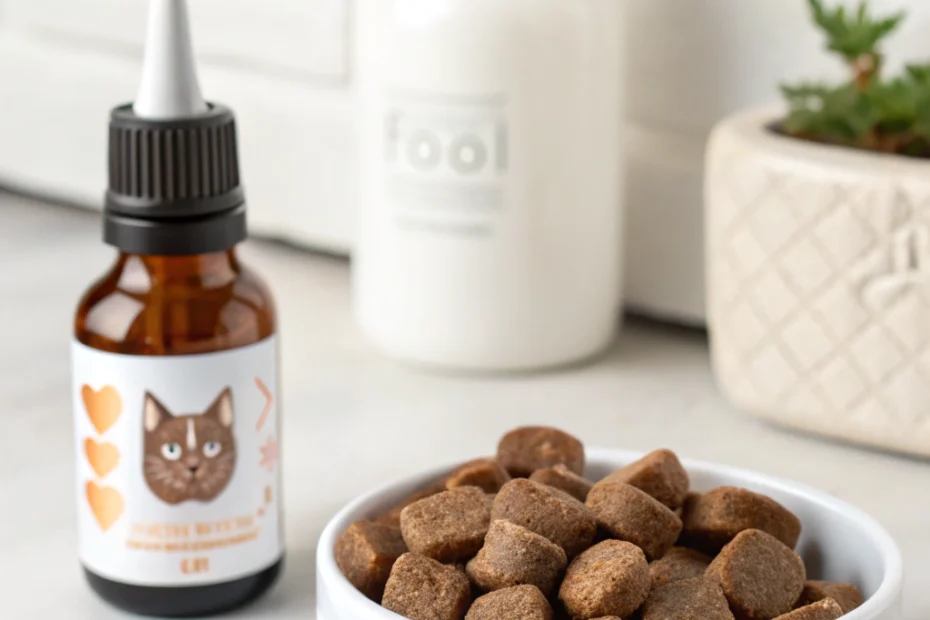At-a-Glance
Creating a calm environment for your cat is essential for their overall well-being. Cats, like humans, can experience stress and anxiety, which may affect their behavior and health. Understanding how to help your cat stay calm can lead to a happier, healthier pet. This guide explores various methods and products that may help in achieving a state of cat calm.
How to Choose
When selecting products to help calm your cat, consider their specific needs and preferences. Cat calming and anxiety relief supplements and products come in various forms, such as sprays, diffusers, and treats. Look for products that are commonly used for reducing stress and promoting relaxation. It’s important to choose options that are safe and suitable for your cat’s age and health condition.
Assess Your Cat’s Needs
Every cat is unique, and their needs can vary. Observe your cat’s behavior to identify signs of stress, such as excessive grooming, hiding, or changes in appetite. Understanding these signs can guide you in selecting the most appropriate calming solutions.
Types of Calming Products
- Sprays and Diffusers: These products release pheromones that may help reduce anxiety and promote a sense of security.
- Treats and Supplements: Edible options that can support relaxation through natural ingredients.
- Interactive Toys: Engaging your cat in play can distract them from stressors and provide mental stimulation.
Safety & Setup
Ensuring the safety of your cat is paramount when introducing new calming products. Always follow the manufacturer’s instructions and monitor your cat’s reaction to any new product. If you notice any adverse effects, discontinue use and consult your veterinarian.
Introducing New Products
Introduce new calming products gradually. Start with small amounts or short exposure times to allow your cat to adjust. This approach can help prevent overwhelming your pet and ensure a positive experience.
Monitoring Your Cat
Keep an eye on your cat’s behavior after introducing a new product. Look for signs of improvement in their stress levels and overall demeanor. If you have concerns, seek advice from a veterinary professional.
Core Pillars
Achieving a calm environment for your cat involves more than just products. Consider these core pillars to support your cat’s emotional health:
Routine
Cats thrive on routine. Consistent feeding, playtime, and rest schedules can provide a sense of security and reduce anxiety.
Environment
Create a safe and comfortable space for your cat. Provide hiding spots, scratching posts, and cozy beds to make them feel secure.
Interaction
Regular interaction with your cat can strengthen your bond and provide reassurance. Spend quality time playing or simply being present with your pet.
Placement & Environment Tips
The placement of calming products and the overall environment play a crucial role in their effectiveness. Here are some tips to optimize their use:
Strategic Placement
Place diffusers or sprays in areas where your cat spends most of their time. This ensures they are exposed to the calming effects throughout the day.
Environment Enrichment
Enrich your cat’s environment with toys, climbing structures, and perches. A stimulating environment can reduce boredom and stress.
Quiet Zones
Designate quiet areas in your home where your cat can retreat when they need solitude. This can help them feel safe and reduce anxiety.
Comparison with Alternatives
While calming products can be effective, it’s important to consider other methods that may support your cat’s calmness:
Behavioral Training
Training can help address specific stress-related behaviors. Techniques such as positive reinforcement can encourage desired behaviors.
Dietary Adjustments
Some diets are formulated to support stress reduction. Consult with your veterinarian to explore dietary options that may benefit your cat.
Professional Help
In cases of severe anxiety, professional help from a veterinarian or animal behaviorist may be necessary. They can provide tailored advice and treatment plans.
FAQs
Here are some common questions cat owners have about calming their pets:
How long do calming products take to work?
The time it takes for calming products to work can vary. Some may show effects within hours, while others might take a few days. Monitor your cat’s response and adjust usage as needed.
Are natural calming products safe for all cats?
Most natural calming products are safe for cats, but it’s important to choose products appropriate for your cat’s age and health. Always consult your veterinarian if you’re unsure.
Can I use multiple calming products at once?
Using multiple products can be effective, but it’s essential to ensure they are compatible. Consult with a veterinarian to avoid potential interactions.
What to Do Next
Now that you have a better understanding of how to support a calm environment for your cat, consider observing your pet’s behavior and identifying any stressors. Explore various calming products and methods to find what works best for your feline friend. Remember, patience and consistency are key in helping your cat achieve a state of calm.
Disclaimer: Always consult your veterinarian for personalized advice regarding your cat’s health.
